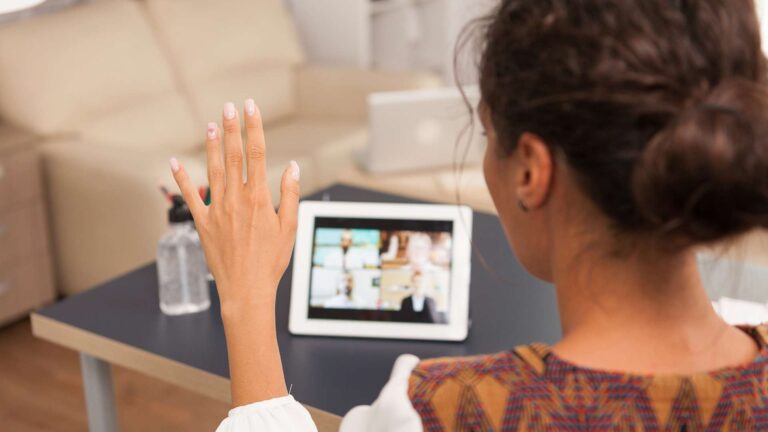Table of Contents
In the US, healthcare can be expensive and time-consuming. Long waits at emergency rooms and urgent care centers are all too common, even for non-life-threatening issues. Getting quick medical help often feels frustrating and costly. That’s why telehealth and virtual urgent care are on the rise. These digital healthcare options offer a faster yet more affordable way to get care.
Whether it’s a minor illness, a prescription refill, or a follow-up question, virtual care is changing how people access medical help. In this blog, we’ll explore 24/7 telehealth: when to use it instead of the ER or urgent care. This will help you decide which option makes the most sense based on your needs, schedule, and budget.
What Is 24/7 Telehealth?
24/7 telehealth gives you access to licensed healthcare providers at any time. It can day or night. This is through your phone, computer, or mobile app. There’s no need to drive to a clinic or wait for office hours. Help is just a few taps away, whether it’s midnight or early morning.
Telehealth is ideal for non-emergency issues. It includes:
- Coughs and colds
- Flu symptoms
- Minor skin conditions (like rashes or bug bites)
- Allergies
- Urinary tract infections
- Medication refills or you can have simple prescriptions
The biggest advantage? Accessibility. You can connect with a provider anywhere, from your couch, office, or while traveling. It’s fast, convenient, and often far more affordable than traditional urgent care or ER visits.
When to Choose Telehealth Over ER or Urgent Care
Telehealth is a great option for non-emergency situations. This is where you need care quickly but don’t need to sit in a waiting room or pay high out-of-pocket costs. Here are some common situations. This virtual care makes the most sense:
- Minor Illnesses: A quick video or phone call with a provider can diagnose minor illnesses. This is helpful for colds, allergies, sinus infections, UTIs, and rashes. You can get treated without leaving home.
- Medication Refills: Need a prescription renewed? Telehealth allows for safe, convenient refills without an in-person visit. It is especially useful for routine medications.
- Follow-Up Care: After a hospital stay or an earlier diagnosis, telehealth is perfect for checking in with your provider, reviewing symptoms, or adjusting treatment.
- Mental Health Support: Many platforms now offer licensed therapists or counselors access. This is especially for anxiety, depression, or stress-related concerns.
The biggest benefit? Cost and time. Virtual care is often a fraction of the price of urgent care or ER visits. You can access it anytime, from anywhere.
When the ER or Urgent Care Is Still Necessary
It’s not a one-size-fits-all solution. While telehealth is incredibly convenient for everyday health concerns, in-person care is essential in some situations and potentially life-saving.
You must go to the ER or urgent care if you’re experiencing:
- Chest pain or shortness of breath
- Severe injuries, like deep cuts, broken bones, or head trauma
- High fevers in young children or lasting multiple days
- Uncontrolled bleeding or sudden vision changes

Urgent care centers are also better equipped for:
- X-rays or lab testing
- Stitches or wound care or fracture treatment
- Physical exams
- Hands-on procedures
Telehealth is powerful, but it has limits. It can’t provide physical exams, imaging, or emergency intervention, which makes traditional care vital for serious conditions.
The bottom line: Use telehealth for minor, manageable issues, but don’t hesitate to seek in-person care, especially when symptoms are more serious.
Cost Comparison: Telehealth vs ER vs Urgent Care
When it comes to getting care, cost is often the biggest concern, especially if you’re paying out of pocket. Here’s how telehealth stacks up against traditional options:
- Telehealth: Most virtual urgent care visits cost a flat fee, typically between $30 and $100, depending on the platform. Many accept insurance, and most visits are HSA/FSA eligible.
- Urgent Care Centers: Before insurance, a typical urgent care visit costs around $150 to $200. Prices can rise depending on services, such as lab tests or imaging.
- Emergency Rooms (ERs): ER visits often cost $600 or more, even for non-emergency issues. This is just the base fee. Additional tests or treatments can raise the bill significantly.
Bottom line: Telehealth offers the best value, especially for common, non-emergency issues. It is especially important if you have a high-deductible plan or are uninsured.
The Convenience Factor
Convenience matters as much as cost. This is especially true when you’re not feeling well. Here’s how the three options compare when it comes to speed and ease:
- Telehealth: It is available 24/7. This is with no need to leave home. Most visits happen within 5–10 minutes of requesting care. It is perfect for late nights, weekends, or traveling.
- Urgent Care: It is usually open after hours and on weekends, but is still tied to the location and operating hours. You may still wait 30–60 minutes or more, especially during busy times.
- Emergency Room (ER): It’s open 24/7, but is often overcrowded. Non-emergency cases can expect to wait 2–4 hours or longer.
Real-world example: Do you have a sore throat at 10 p.m.? With telehealth, you can talk to a doctor in minutes. This way, you will get a prescription before bed. With urgent care, you’d have to wait until morning. If you go to the ER, you might wait for hours.
How 24/7 Telehealth Fits Into Everyday Life
One of the biggest strengths of 24/7 telehealth is how well it adapts to different lifestyles. It’s not just convenient. But it’s inclusive and accessible for people. These people are those who often face barriers to care.
- Students on Campus: Telehealth gives students fast, stress-free access to medical help. There is no need to leave their dorm. This is whether it’s late-night flu symptoms or a rash before finals.
- Busy Professionals and Parents: You must take time off for a clinic visit, but it isn’t always possible. This is especially true for people juggling work, kids, or both. Telehealth fits into their schedule, not the other way around.
- Seniors and Rural Residents: Telehealth brings care directly to people. This is especially true for those living in remote areas or with limited mobility. There is no need for travel or long waits.
Telehealth is helping close the healthcare gap. It makes care more reachable regardless of location, schedule, or lifestyle.
Insurance, Privacy, and Accessibility
One of the reasons telehealth has grown so quickly is its flexibility. Accessing care requires more than knowing how to pay for it.
- Insurance Coverage: Many telehealth providers accept major insurance plans. It makes visits more affordable. For those without coverage, most platforms offer flat-rate self-pay options. It is usually under $100.
- HSA/FSA Eligible: Virtual visits are often eligible for Health Savings Accounts (HSA) or Flexible Spending Accounts (FSA), which allow you to use pre-tax dollars for care.
- Privacy and Security: Reputable telehealth platforms follow HIPAA regulations. Your health information is kept secure and confidential, like in a doctor’s office.
- Wider Acceptance: Employers and insurance companies increasingly offer telehealth as part of health plans, making it more mainstream and accessible.
Beem Health’s Role in Smarter Healthcare
- Beem Health makes finding and affording the care you need easier without breaking your budget. It connects users to affordable virtual care options, taking the stress out of everyday health decisions.
- Beem goes beyond just healthcare access. It’s part of a bigger mission to support financial wellness. Beem helps you stay in control of your money and your health. This is whether it’s avoiding high ER bills or managing recurring health expenses.
- Beem empowers you to make healthcare choices with built-in budgeting tools and smart recommendations. These are both convenient and cost-effective.
Conclusion
Telehealth has become a smart, affordable option for everyday health concerns. It’s faster, more convenient, and cheaper than visiting an ER or urgent care center. That said, serious or emergencies still require in-person care. Knowing the difference is key.
With the right tools like Beem Health, managing your health doesn’t have to be stressful or expensive. From the house of Beem, the personal finance app trusted by over 5 million Americans, Beem Health connects you to trusted virtual care options. It lets you receive care anytime, anywhere, while helping you manage your medical costs. Download the app here.















































